If you’ve been following a low-carb or keto diet for a while, you probably know what you can and cannot eat to stay in ketosis. So there’s usually no need to take frequent ketone measurements or to stress out about the fact that your ketone levels naturally fluctuate throughout the day.
But if you’re like me and enjoy testing different foods or making lifestyle changes to see how they might impact your metabolism, then being able to accurately test your ketone levels in a non-invasive way is a plus.
In this article, I’ll give you an overview of four methods for measuring your ketone levels and explain why Biosense, a medical-grade breath ketone analyzer that’s been tested for accuracy in clinical trials, is the most accurate way for consumers to measure their ketone bodies.
I’ve been using Biosense since 2020 and I’m thrilled to share my findings.
Biosense Ketone Breath Meter
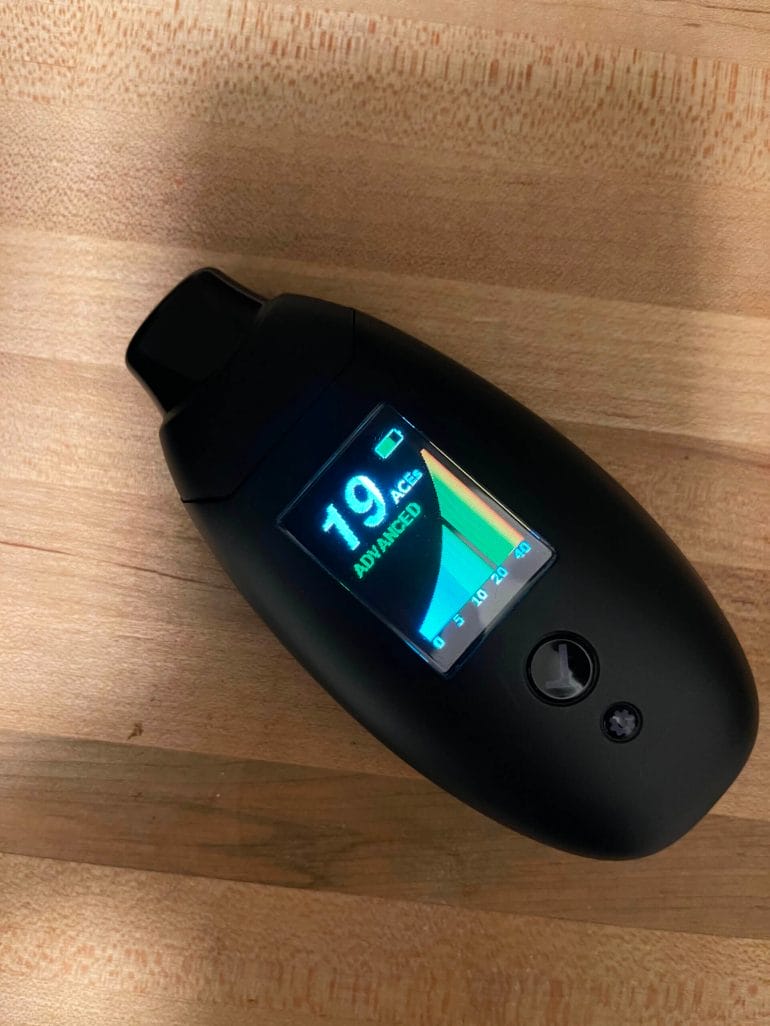
Summary
Biosense is a breath ketone meter developed in the United States by Readout Health that boasts clinically-validated accuracy.
Biosense has been a gamer-changer in real-time ketone testing for me because I can use the device several times a day without incurring additional costs beyond the initial purchase.
Before we get into the specifics of Biosense, let’s briefly talk about the basics.
Defining Nutritional Ketosis
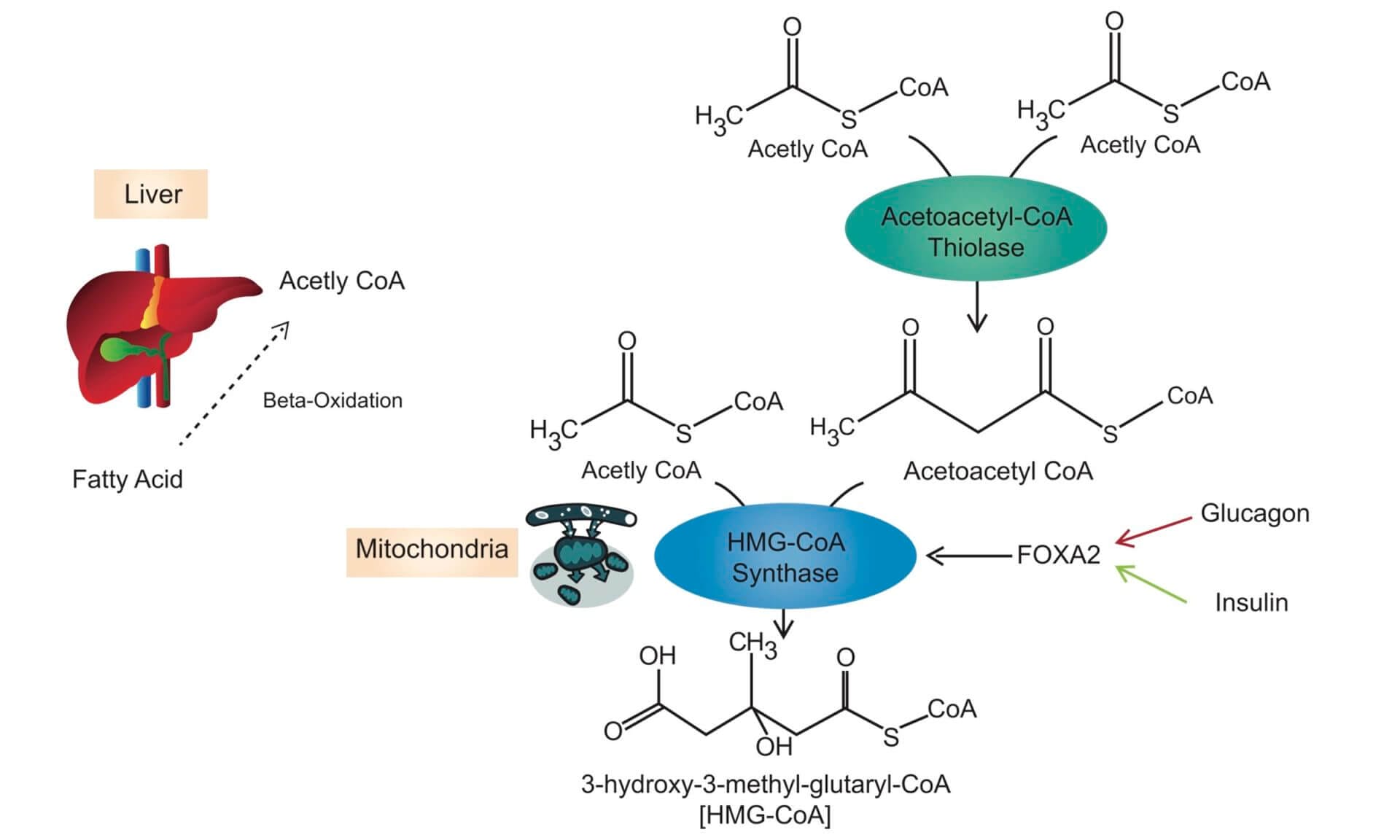
As I’m sure you already know, the main goal of a ketogenic diet is to get into and remain in nutritional ketosis, a metabolic state that allows your body to use fat instead of glucose (from dietary carbohydrates) as its primary fuel source.
While many cells in the body can burn fat directly, others (including brain cells) can’t. Instead, they require the liver to convert those free fatty acids into ketone bodies before they can use them for energy.
Types of Ketone Bodies

What you might not know is that there are three different types of ketone bodies, including:
- Acetoacetate (AcAc),
- 3-beta-hydroxybutyrate (BHB or 3HB), and
- Acetone (ACE).
Acetoacetate is an unstable ketone body that’s produced by the mitochondria of liver cells. After the liver releases AcAc into the bloodstream, it becomes the preferred energy source for the heart, renal cortex and brain. Since your kidneys excrete excess acetoacetate via the kidneys, you can measure this ketone body using urine test strips.
Acetoacetate is the first ketone your body produces and the base of both BHB and acetone. About 20% of the ketone bodies in your bloodstream are acetoacetate.
Beta-hydroxybutyrate or BHB is arguably the most well-known ketone body among followers of a ketogenic diet because it’s available in the form of exogenous ketone supplements and you can easily measure it using a blood or finger-prick test. BHB is also the most abundant ketone body as it makes up about 78% of all ketones in your system.
Technically, BHB is a carrier or storage mechanism that delivers energy from the liver (where it’s synthesized from fatty acids) to peripheral tissue. Some people think that BHB is the intended end-product of ketogenesis (the creation of ketones). However, it’s worth noting that BHB can’t be used for energy without being converted back into acetoacetate.
Acetone is the least abundant ketone. It makes up about 2% of all ketone bodies, and it’s not used for energy. Instead, your body usually excretes it quickly through sweat or your breath. The latter is why you can measure it using a breath ketone analyzer.
Much like BHB, your body makes breath acetone from acetoacetate, which is why you can correlate levels of ACE and BHB.
If you want to learn more about the different types of ketones, check out this article, which explains the key concepts in plain language.
Biosense Ketone Breath Meter Review
Biosense is a breath ketone meter developed in the United States by Readout Health that boasts clinically-validated accuracy.
Biosense has been a game-changer in real-time ketone testing for me because I can use the device several times a day without incurring additional costs beyond the initial purchase.
Pros
- Non-invasive.
- Clinical-grade accuracy.
- Cost-efficient in the long run.
- Requires minimal maintenance.
- Offers ketosis dosing recommendations.
- Integrates with Apple Health, Google Fit and Nutrisense (CGM).
Cons
- App integrations are still limited.
- Initial purchase price.
How Biosense Works
Much like other breath ketone meters, Biosense measures the amount of acetone in your breath. But the way Biosense analyzes your breath is different from other devices.
For example, Biosense discards most of the air you blow into the meter (by redirecting the airflow away from the sensor) via vents on each side of the mouthpiece.
Biosense only starts collecting a breath sample for analysis as you reach the end of your exhale, which ensures that the device only analyzes the part of your breath that originated deep down from your lungs.
Biosense calls that technology deep lung sampling and claims it provides more accurate and reproducible results “by correcting for natural variations in exhalation time and lung capacity across individuals.”
Biosense is so good at deep lung sampling that it can even pick up acetone in the breath of our five-year-old. That’s quite a feat because the lung volume of kids is much smaller than that of adults. That’s why most breath analyzers don’t work for kids.
How does Biosense know when you reach the end of your breath? It uses a microphone that’s built into the meter to detect changes in the sound you make as you exhale. Pretty clever!
Discrepancies between Biosense and Keto-Mojo
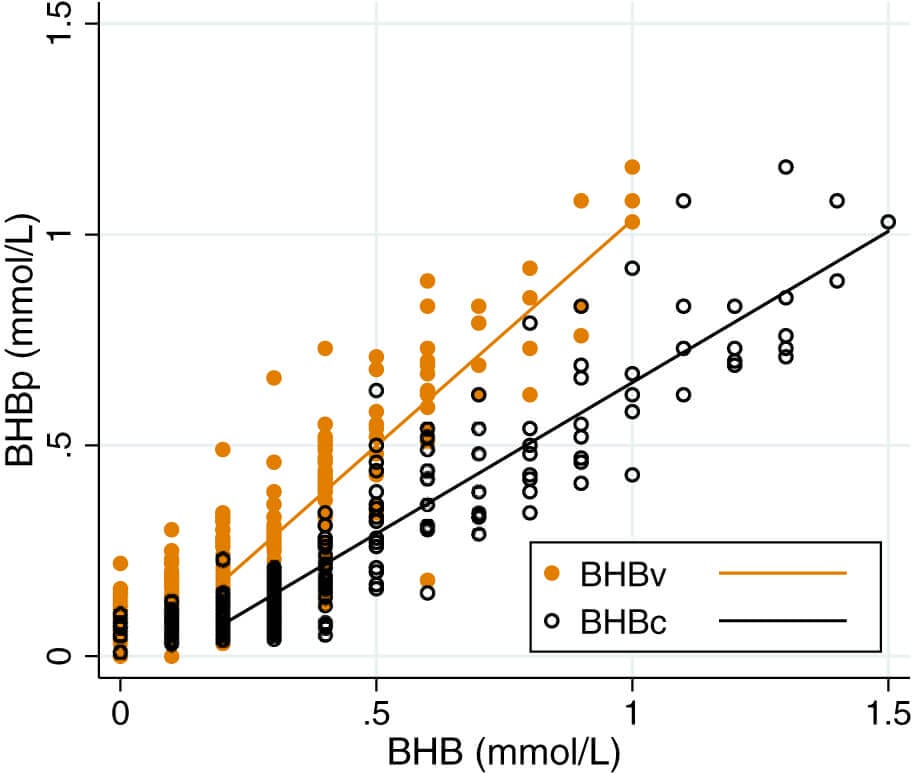
The Biosense meter measures the amount of acetone in your breath, which you can easily correlate to blood ketone levels (BHB).
For example, if Biosense reports 16 ACEs, then your blood ketone level is approximately 1.6 mmol/L. Published studies and Biosense’s own clinical trials have confirmed that there is an approximate 10-to-1 correlation between acetone and BHB. Biosense told me that this 10-to-1 correlation is by design to make it easier for clinicians to understand the ACEs value.
When I first got Biosense, I couldn’t help but compare the results with the results from my Keto-Mojo meter. While the readings of both devices correlated in some of the cases, more often than not, Keto-Mojo showed higher ketone readings than Biosense.
After some digging, I learned that most capillary blood ketone meters overestimate ketosis, as confirmed by this Danish study that compared capillary and venous blood ketone tests.
The authors of the study confirmed that while capillary ketone blood meters are relatively accurate at detecting relative changes in blood ketone levels, they often overestimate the absolute amount of BHB in the blood.
So keep that in mind if you decide to compare Biosense with your existing blood ketone measuring system.
Ketosis Dosing

If you’ve been on a ketogenic diet for a while, you might be wondering what levels of ketosis you should maintain to reach your health goals. Most people believe that “more is better,” and they get frustrated when they realize that they can’t maintain the same high ketone scores they had in the first few weeks after starting a ketogenic diet.
As part of Readout Health’s (the maker of Biosense) involvement in the scientific community and clinical trials, the company has realized that ketosis dosing is a crucial but overlooked component of a well-designed ketogenic diet.
In other words, it’s important to reach and maintain certain ketosis levels based on what you’re trying to accomplish.
For example, a ketogenic diet can be used to achieve any of the following health goals:
- Cognitive improvement
- Diabetes prevention
- Healthspan/longevity
- Improved gut health
- Improved joint pain
- Improved mental health
- Improved sleep
- Lower blood sugar
- Reduced blood pressure
- Reduced inflammation
- Weight loss
Biosense is actively working with the scientific community to find out exactly what the appropriate ketosis dosage is for each of these metabolic health goals.
While Biosense doesn’t have all the answers yet, its mobile app allows you to select what your health goal is and measure your daily ketone dose. In other words, with every measurement you take with Biosense, you can get closer to reaching your daily goal (assuming the device detects ketones in your breath).
I like the concept of having a daily goal, even though we don’t yet know exactly what that goal should be for each of the health outcomes listed above. But even without that exact knowledge, I’ve noticed that working towards a goal keeps me motivated to stay in ketosis and take regular breath samples.
Mobile App
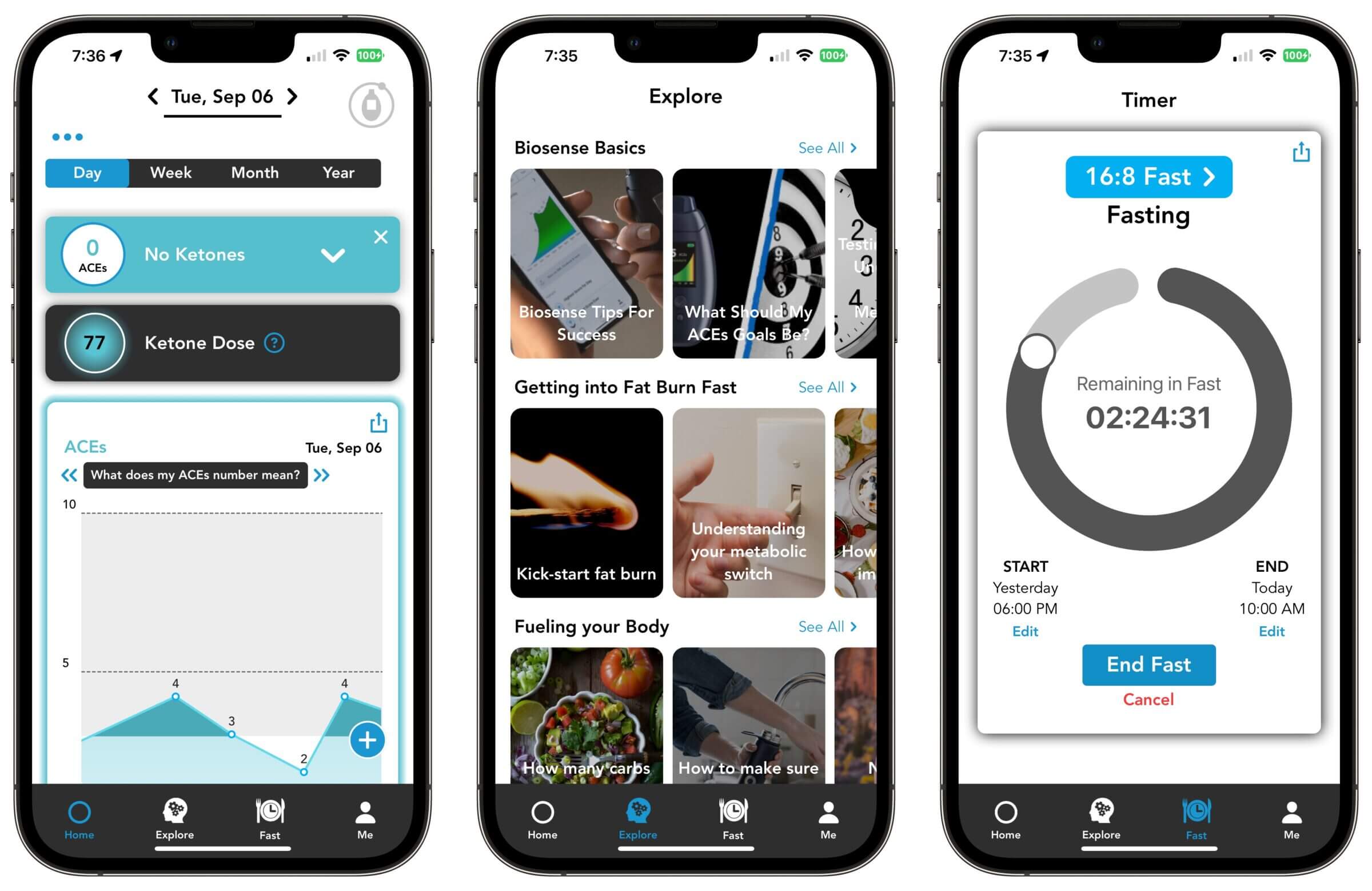
The Biosense device and mobile app were originally developed for use in the medical field, and were not intended for retail consumers. As a result, the first few iterations of the mobile app felt a bit clunky, especially when compared to apps of other metabolic breath analyzers (such as Lumen) that are less accurate but 100% geared towards the consumer market.
The good news is that Biosense has dramatically improved its mobile app over the past few months by making it more intuitive and adding useful features that can help you on your ketogenic journey.
Among the new concepts Biosense has introduced in the app is ketone dosing (as mentioned in the previous section), as well as everything listed below.
Fasting Timer

The latest iteration of the Biosense app features a fasting timer that makes it easy to track how long you’ve been fasting and which lets you know when your fast is over.
What I like about the fasting timer is that you can choose from the most popular intermittent fasting protocols (e.g., 16-8) or you can create your own custom fasting schedule.
If you’re not familiar with intermittent fasting and its benefits, I highly recommend you check out my ultimate guide to intermittent fasting.
Useful Resources
A new feature that’s incredibly useful for anyone who is new to low-carb eating is the Explore tab. It features helpful information that covers the basics of Biosense and how to use the device, and has resources about how to get into ketosis faster, meal preparation tips and so much more.
App Integrations
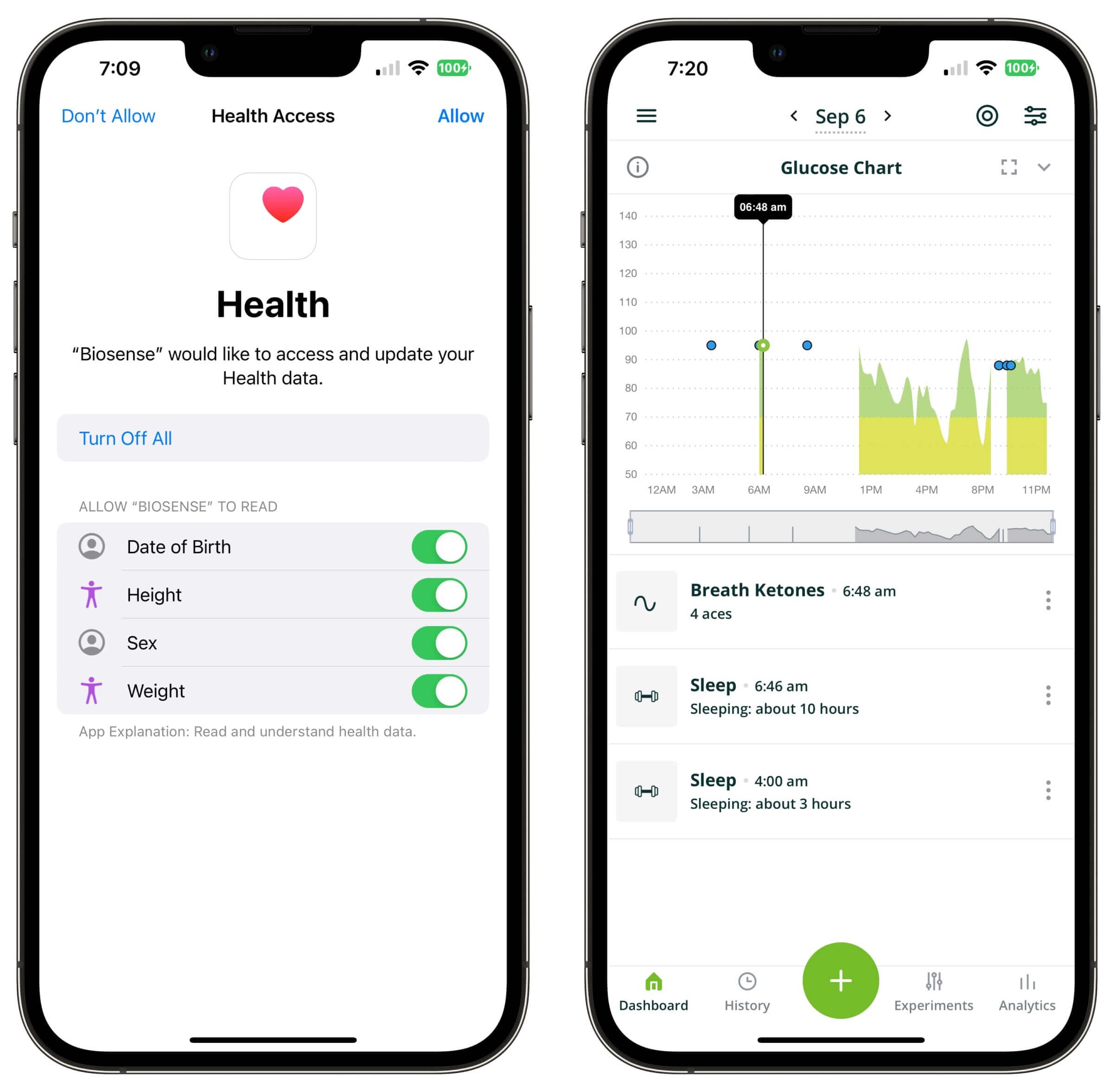
When I first started using Biosense in 2020, the mobile app didn’t offer any integrations with other health platforms. Fortunately, a lot has changed since then, and Biosense now integrates with Apple Health and Google Fit — albeit in a limited capacity.
The one integration I’m most excited about is with Nutrisense — a new continuous glucose monitor platform that I recently started testing.
If you think about it, correlating blood glucose with ketone measurements makes a lot of sense because it can help you understand how food, stress, exercise and other factors that can raise blood sugar levels can also impact your body’s ability to burn fat for energy.
As of this writing, NutriSense can import breath ketone readings from Biosense but Biosense doesn’t import blood glucose readings from NutriSense (or Apple Health) yet. I hope that future versions of the Biosense app will feature a two-way sync to make both readings transparent to end users.
Battery Life
Biosense comes with a rechargeable battery that lasts a couple of days, depending on how often you use the device.
The charging time is approximately two hours via micro-USB.
I have a micro-USB cable semi-permanently plugged into my iMac Pro that I use to charge Biosense, WHOOP and other compatible devices every few days.
I should mention that the battery of the first-generation Biosense device I received in 2020 drained relatively quickly. The updated hardware Biosense has released since then doesn’t have those battery-drain issues.
Maintenance
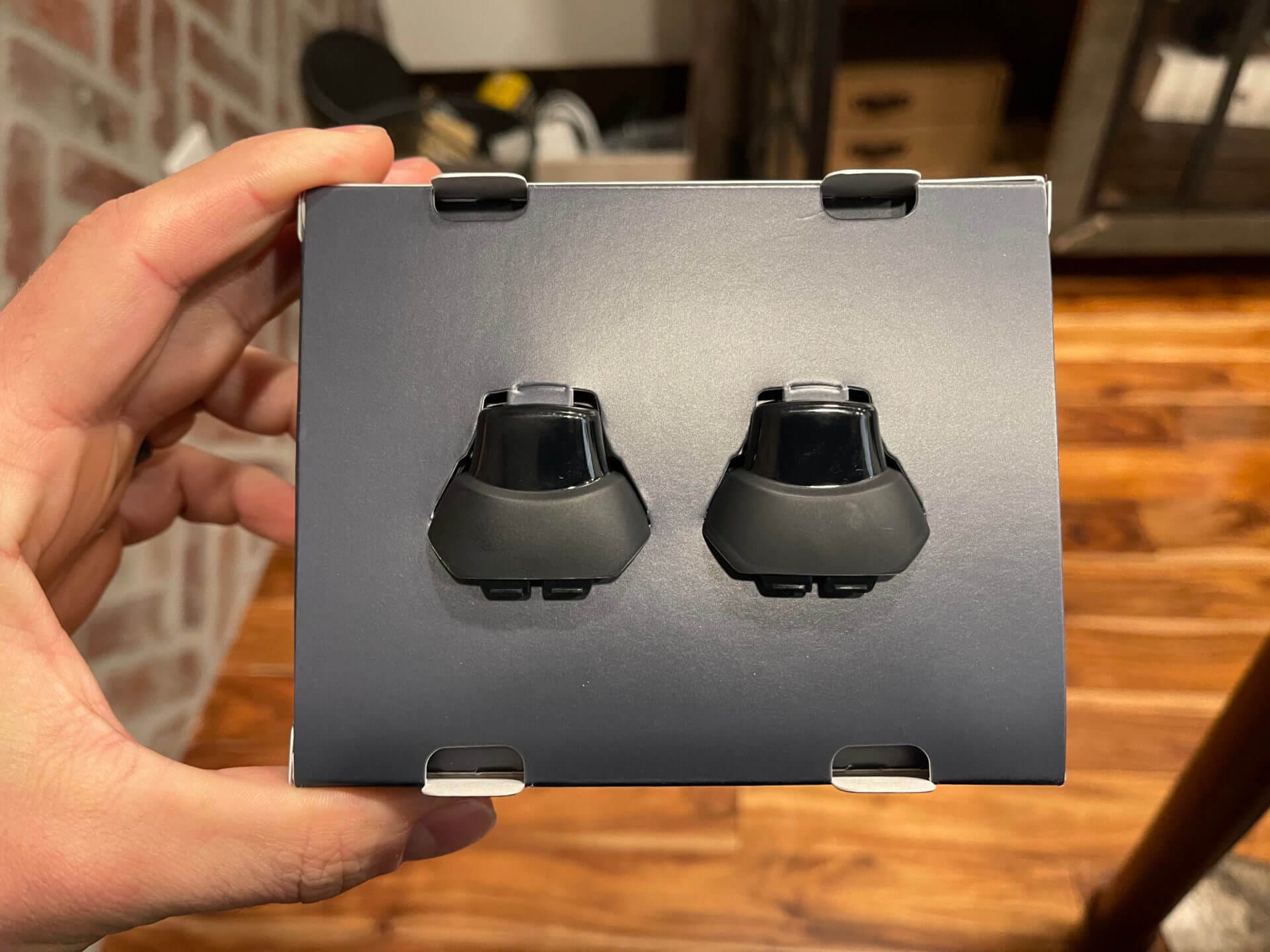
Biosense doesn’t require a lot of ongoing maintenance, but you should clean the mouthpiece every so often because it’ll likely accumulate saliva from your breath.
Speaking of the mouthpiece: Biosense includes two replacements in the box. Since the tip of the mouthpiece is medical-grade nylon, it shouldn’t wear out anytime soon. But if it does, you’ll be covered.
For reference, I’ve used my Biosense since 2020 and have never had to replace the mouthpiece.
Price
The Biosense breath ketone monitoring system includes the Bluetooth-enabled meter, a Micro-USB charging cable, two replacement mouthpieces, a protective neoprene sleeve and a mobile app.
The price for the complete system is $299. While that sounds like a steep price for a ketone monitor, keep in mind that you can test your ketone levels an unlimited number of times. In other words, you won’t have to keep buying test strips or periodically recalibrate the device.
If you have a flexible spending account (FSA), you even can use that to get reimbursed for the cost of Biosense.
Note that you can use discount code Kummer20 at checkout for a $20 discount!
My Experience With Biosense
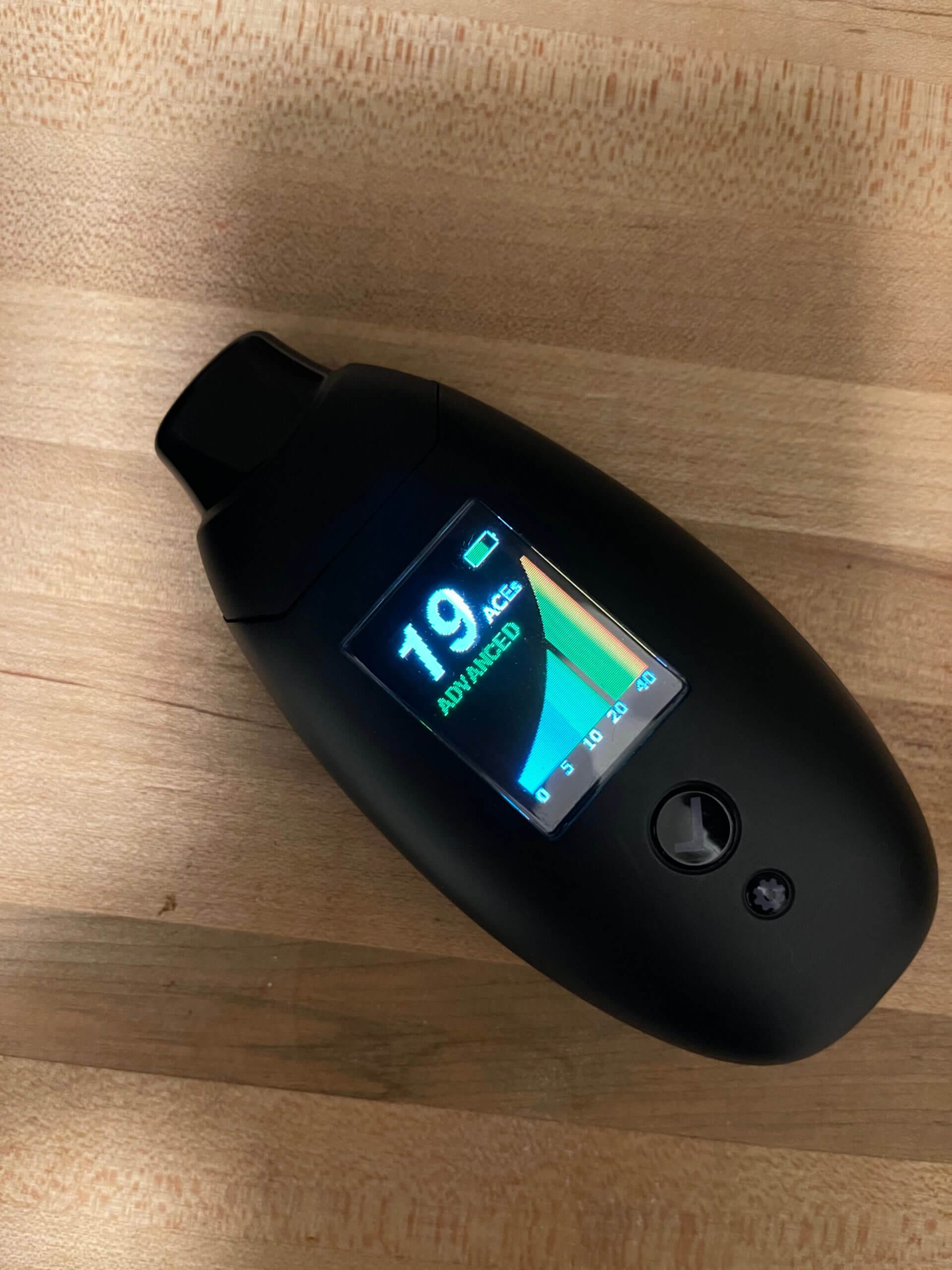
My experience with Biosense has been mostly positive, even though it didn’t always report the ketone readings I wanted and hoped for.
For example, after our vacation to Mexico — where I consumed slightly more carbs than I usually do — it took me several days to get back into deep ketosis. I thought that my body would be quicker at switching back to burning fat for fuel. So I got frustrated when I saw readings in the range of 3-5 ACEs for a few days.
Obviously, that wasn’t the device’s fault. But it was annoying nonetheless.
Biosense wasn’t made to be shared or used with kids, but that hasn’t prevented me from letting my wife and kids use it as well.
To my surprise, Biosense worked incredibly well with both our nine-year-old daughter and our seven-year-old son (they were seven and five old when they first started using Biosense). In fact, they have consistently scored better breath ketone readings than my wife and me.
Lucas, our youngest, clocked in at 36 ACEs one morning after skipping dinner the night before. Needless to say, we didn’t make him fast; he decided to play with his toys rather than eat.
The lesson I learned from those experiments was that intermittent fasting is the quickest way to get into ketosis, and that the smaller glycogen stores of kids make it much easier for them to get into and stay in ketosis.
Our kids usually eat more carbs (in the form of fruits and raw honey) than we do, yet an overnight fast (while sleeping) catapults them into deep ketosis while we remain at moderate to advanced breath ketone levels.
Another lesson I’ve learned is that eating too much protein can trigger an insulin response that can impact my ketone readings without also impacting my blood glucose levels.
You can check out my YouTube video about kids and the ketogenic diet to learn more about that experiment.
I performed that experiment just for fun and out of curiosity, but if you have diabetes or another disease related to insulin, you could use Biosense to test how your body responds to certain foods by releasing insulin.
Biosense vs. Urine Strips and Blood Tests
| Biosense | Urine | Capillary | Breath | Venous | |
|---|---|---|---|---|---|
| Accuracy | ★★★☆ | ★☆☆☆ | ★★☆☆ | ★☆☆☆ | ★★★★ |
| Convenience | ★★★★ | ★★☆☆ | ★☆☆☆ | ★★★★ | ★☆☆☆ |
| Cost | 💰 | 💰 | 💰💰💰 | 💰 | 💰💰💰 |
If you’ve come this far you might be wondering how Biosense compares to other methods of measuring ketones, including:
- Urine strips
- Other breath ketone monitors
- Capillary blood tests (finger-prick tests)
- Venous blood tests
The list above is ranked based on the accuracy of the testing method. Note that there are different types of breath ketone meters on the market and most of them are much less accurate than the clinically-tested Biosense.
Urine Ketone Test Strips
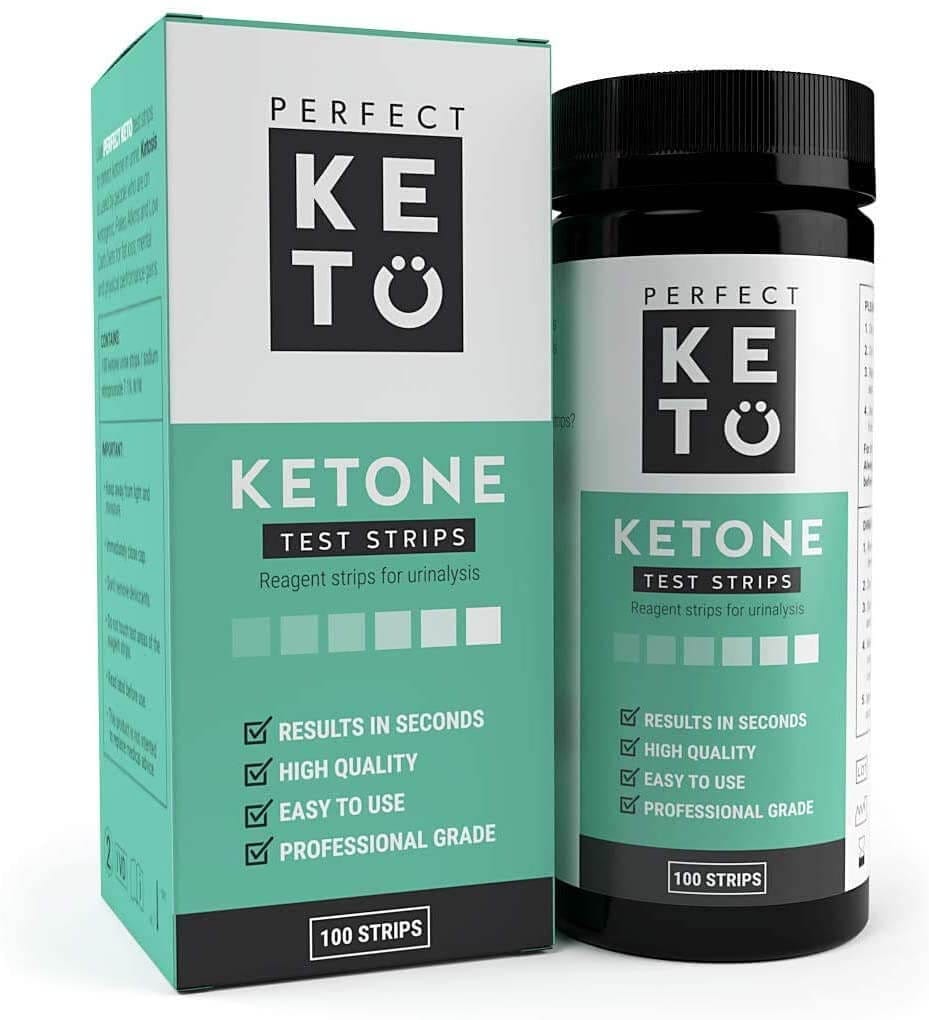
Like most people just starting out on their ketogenic journey, I used urine test strips to check if I was in ketosis.
The clear advantage of urine test strips is that they’re inexpensive and provide quick results. For example, you can pick up 100 test strips for less than $8 from Perfect Keto or on Amazon.
However, there are several problems associated with urine test strips, including:
- They give you a semi-quantitative measurement of acetoacetate and they don’t detect BHB. In other words, they can only give you an indication of whether or not you’re in ketosis.
- The results often don’t equate to plasma (blood) ketone concentrations.
Additionally, as your body becomes more fat-adapted and proficient at using ketones for energy, it will excrete fewer of those molecules via the urine. As a result, you’ll likely run into the issue of false negatives after having been on a ketogenic diet for a while.
When I use urine test strips these days, I mostly get negative results because my body no longer excretes a high volume of ketones via urine.
My recommendation is to consider leveraging urine test strips only if your budget doesn’t allow for a more accurate ketone meter.
Consumer-Grade Breath Ketone Analyzers
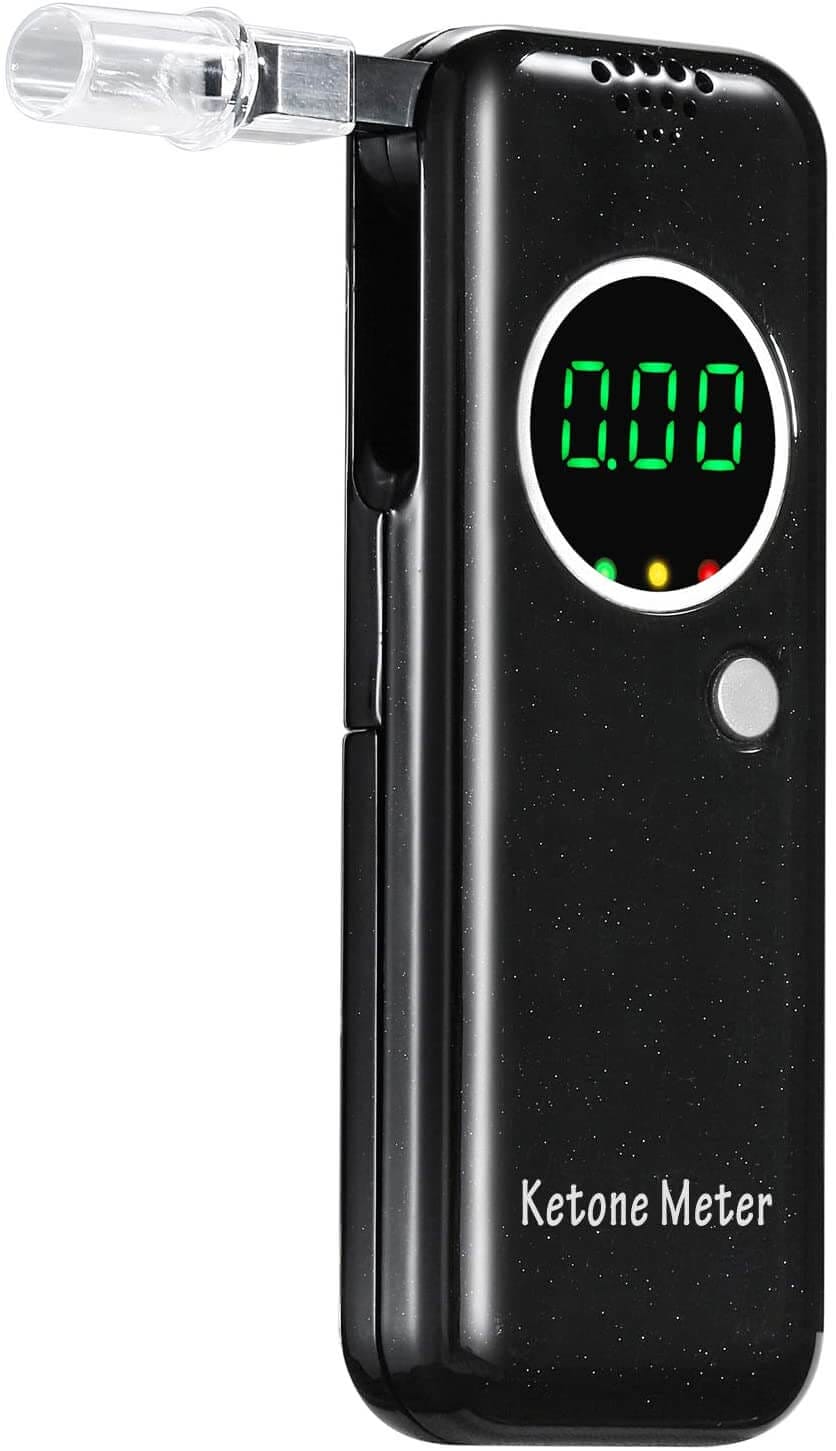
Breath ketone monitors measure the amount of acetone in your breath. In other words, they can’t directly measure BHB (the ketone your body uses for fuel).
The problem with most ketone breath analyzers is their reliability, as there are several factors that can negatively influence their accuracy or cause them to fail, including the use of breath mints, chewing gum, tobacco and toothpaste.
Additionally, the consumption of certain foods and beverages — such as alcohol, coffee, garlic and green tea — can negatively influence the test results.
If that wasn’t enough, your breathing pattern can also influence the test results, and you might have to periodically recalibrate the device.
Last but not least, when you blow into a breath meter, ambient air reaches the sensor and “dilutes” the breath sample. That can also lead to inaccurate test results.
These are some of the factors that made me stick with blood ketone testers until I stumbled across Biosense.
Capillary Blood Ketone Meters
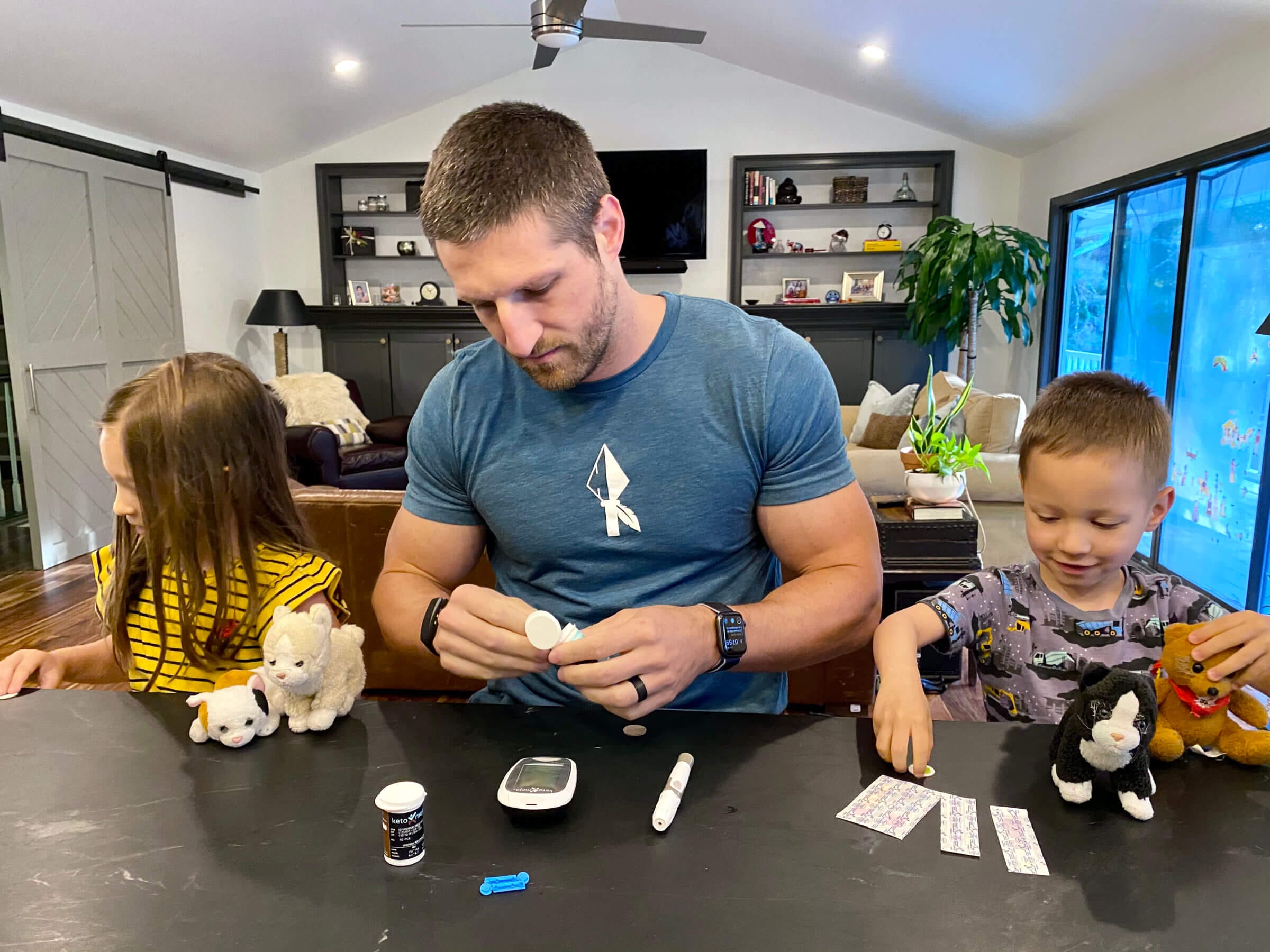
Arguably the most popular way to measure ketone levels is a capillary blood ketone meter, such as the one from Keto-Mojo.
The advantage of consumer-grade blood ketone testers is that they’re reasonably accurate and relatively easy to use.
The disadvantage of these devices is that you have to stick a needle into your fingertip, squeeze out a drop of blood, and transfer that blood to a relatively expensive testing strip.
If you only want to test your blood ketone levels every couple of days, then neither the fact that you have to prick your finger nor the 80-cent-per-strip cost are issues.
But if you want to perform several tests per day, a traditional blood ketone meter can quickly become an expensive inconvenience.
For example, people who have diabetes (and who are at higher risk of developing ketoacidosis) have to test their blood glucose (and sometimes, their blood ketone levels) several times a day, unless they have access to a continuous glucose monitor and a simple breath ketone analyzer.
As far as accuracy is concerned, blood ketone meters are probably accurate enough for the average consumer who wants to confirm the effectiveness of their low-carb dieting efforts.
However, a systematic review of the accuracy of capillary hydroxybutyrate measurements devices concluded that:
“Despite the advantages of the use of Point of Care meters for measuring capillary β-OHB, there are limitations. According to Dhatariya [13], there is evidence of poor performance of Point of Care meters at high levels of ketone concentration. This position is supported by Yu et al. [29] who demonstrated that the use of Abbott meter for the measurement of β-OHB correlates well with the reference laboratory method (Stanbio Assay) up to 3 mmol/L, and becomes discrepant after that value. The authors further observed that while the Abbott meter may be useful for the diagnosis of DKA, it may present challenges to clinicians in the management of patients with DKA who have β-OHB values greater than 5 mmol/L (reference method) in hospital settings.”
Another study confirmed that capillary blood tests may overestimate ketosis.
Taking into account the potential accuracy issues, cost and inconvenience, I prefer breath ketone meters over pricking my finger.
Venous Ketone Blood Test
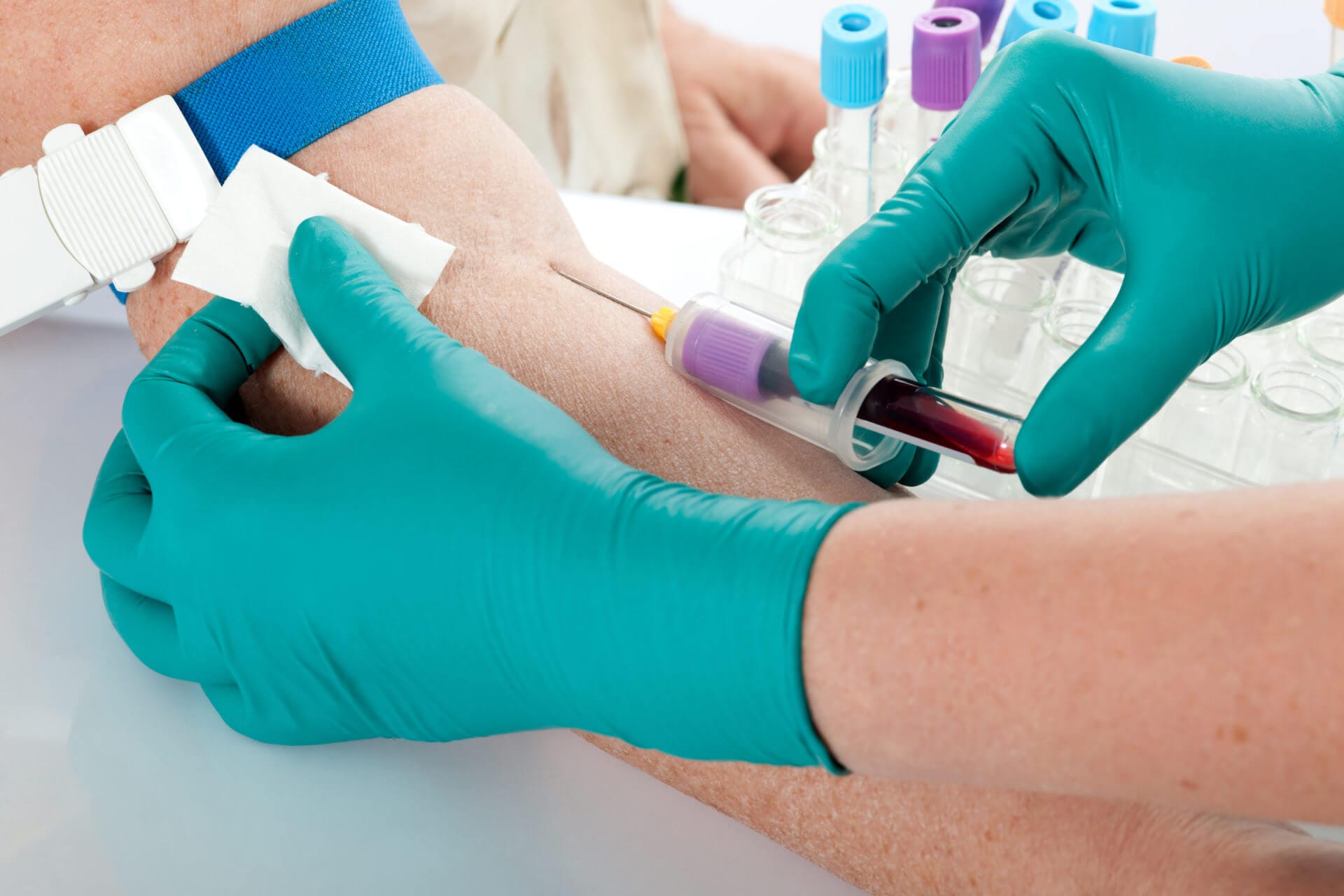
Having a lab draw blood and evaluate your ketone levels is the gold standard of ketone testing. Unfortunately, it isn’t something you can easily replicate at home. But even if you could, it’s relatively invasive and not worth the trouble (unless you’re participating in a clinical trial, where 100% accuracy is crucial).
The reason why I mention this method is that you often hear that blood ketone testing is the gold standard. While that’s true, it’s important to make the distinction between venous and capillary ketone blood testing; the former is the gold standard, not the finger-prick test.
Frequently Asked Questions
Biosense is intended to be used by a single person. Nevertheless, I’ve been sharing Biosense with my wife and kids on occasion. The downside of doing that is that their test results show up in my mobile app and I have to manually delete them to keep track of my own readings.
As I mentioned above, Biosense hasn’t been validated for use with kids. I’ve been using my Biosense with our kids anyway and it’s been producing good results as far as I can tell.
The acetone levels in your lungs don’t change very quickly. So there is no benefit to performing back-to-back tests. Additionally, it takes about five minutes for the acetone molecules in the device to dissipate after a test. That’s why Biosense recommends waiting at least five minutes between tests.
Yes, clinical trials have confirmed the accuracy of Biosense and the correlation between breath ketone (acetone) and blood ketone (BHB) levels.
A venous blood test is the gold standard of ketone testing. But unless you’re working in a clinical setting, you will likely not have access to such tests. For consumers, clinically-validated breath ketone monitors like Biosense are the next best option, followed by capillary ketone blood tests.
Ketone bodies can be used for fuel almost exclusively by aerobic cells like heart, muscle, brain and kidney cells. However, red blood and liver cells can’t burn ketones for fuel and require glucose.
Besides reducing your carb intake to under 20 grams of net carbs per day, the fastest way to get into ketosis is intermittent fasting, followed by the consumption of medium-chain triglycerides (e.g., MCT oil powder).
Depending on the number of uses per day, the sensor should last one to three years (or longer). The company will also launch a recalibration and sensor replacement service soon, which will cost $75.
Wrap-Up: Biosense Is the Best Ketone Analyzer on the Market
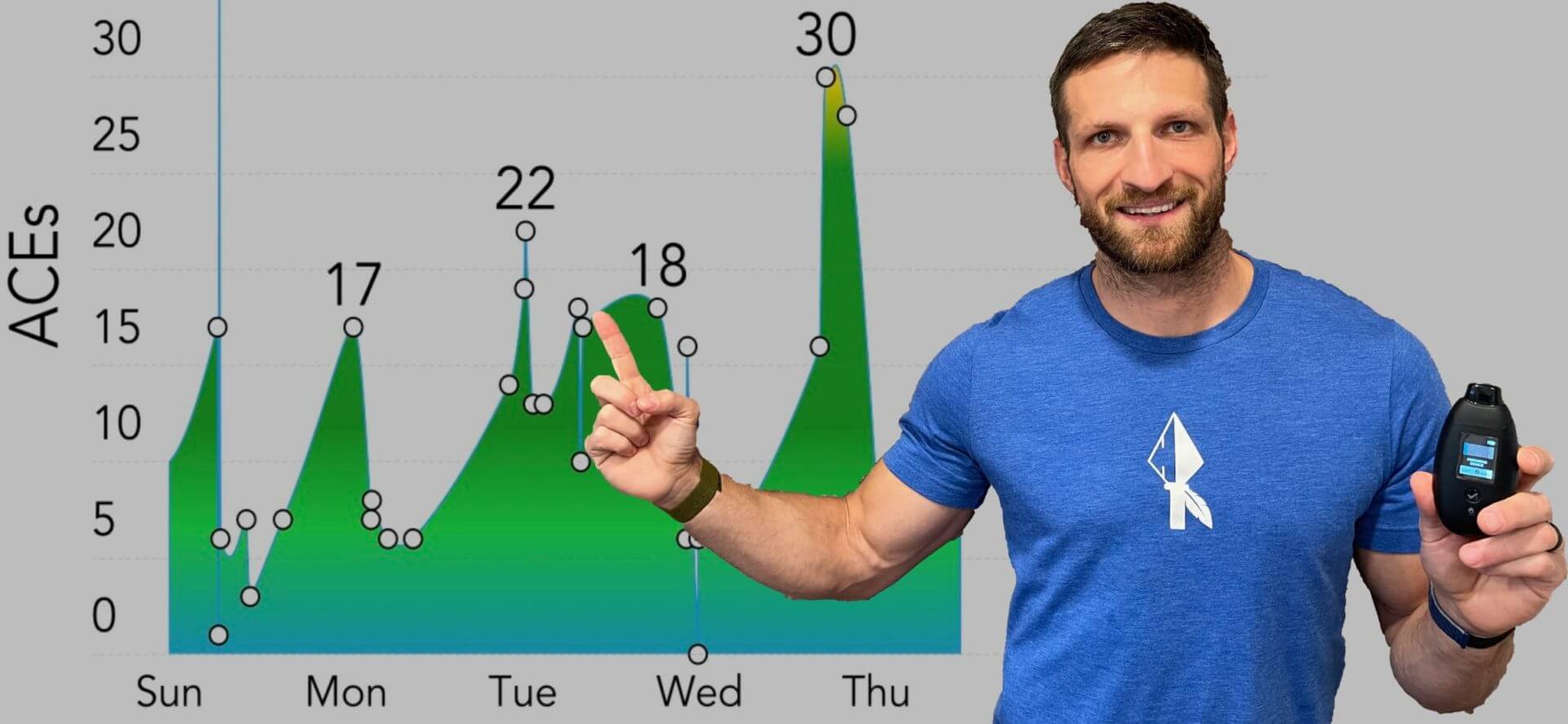
If you’re serious about keeping tabs on your ketone levels in the most convenient, cost-effective and non-invasive way possible, Biosense — an FDA-registered Class 1 medical device — is the best ketone meter you can get.
As I mentioned above, I’m not a fan of “chasing ketones” because it’s unnecessary once you have your dietary lifestyle dialed in.
But if you want to experiment with different foods, exercise and other lifestyle factors in order to learn how those changes might influence your body’s ability to burn fat for energy, having access to a reliable breath ketone analyzer is an advantage.
I’ve been using Biosense since 2020 and I don’t see myself going back to finger-prick tests.
Now I’d like to hear from you! Where are you on your ketogenic journey and how have you been measuring ketone levels? Let me know by leaving a comment below.

Michael is a healthy living enthusiast and CrossFit athlete whose goal is to help people achieve optimal health by bridging the gap between ancestral living and the demands of modern society.
Medical Disclaimer
The information shared on this blog is for educational purposes only, is not a substitute for the advice of medical doctors or registered dieticians (which we are not) and should not be used to prevent, diagnose, or treat any condition. Consult with a physician before starting a fitness regimen, adding supplements to your diet, or making other changes that may affect your medications, treatment plan or overall health. MichaelKummer.com and its owner MK Media Group, LLC are not liable for how you use and implement the information shared here, which is based on the opinions of the authors formed after engaging in personal use and research. We recommend products, services, or programs and are sometimes compensated for doing so as affiliates. Please read our Terms and Conditions for further information, including our privacy policy.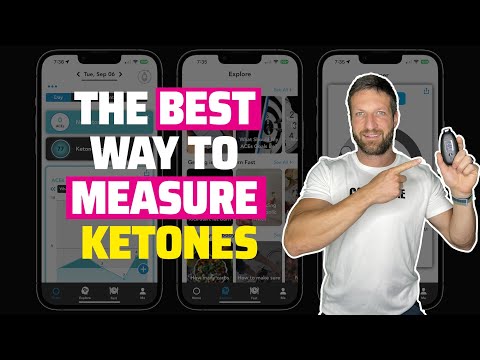
We had so many problems with the device, had to send it 2x back, had to pay for the repairs and shipping and now after 2 years it stopped detecting blow. We got a back up device from Amazon for $60 and it works like a charm.
Hey Thomas,
I’m sorry to hear that! Did Biosense tell you what was wrong with the device when you sent it in for repair twice? What backup device did you get on Amazon?
Hi, I’ve tried to read as much information as there was for bio sense. I’m really excited, but I am a little bit nervous about all the information this year. I think I read where they can look up my medical information and share it with people and share what other things I’m shopping for. I’m not very good at buying these kind of things And understanding that is this something that I need to be worried about ??
There is definitely a need for concern when it comes to online privacy and how your data is handled. But that’s not something unique to Biosense (or Readout Health — the company behind the product). You can check out Readout’s privacy policy at https://mybiosense.com/privacy-policy/.
Hi Michael- I purchased my Biosense a few years ago and I haven’t used it much I found that I did not do well on the Keto diet personally. I am just wondering, can still use the Biosense to track metabolic health in any meaningful way without focusing on the ketone results? Im thinking just using it to monitor readings after eating certain meals or following exercise, etc. might give me insight into how my body responding. Any advice on using this device when no longer tracking ketones?
Hey Julie,
I’m not on a keto diet anymore either but use Biosense occasionally to check if I produce ketones when I fast for extended periods or when I don’t eat carbs on a given day. Kind of like a check to make sure my body still knows how to use fat for fuel in the absence or carbs.
I hope that helps!
The biosense company has the worst customer service I have experience in years. They want to charge $75 for service if your device is out of warranty. My battery only lasts through 2 or 3 uses at best, and it has always been very weak. It barely lasted a day when I first got it. The unit now asks to be cleaned every time I start it. It also will not pass data to my iphone app. These guys also do not have any phone number to call for support in spite of the fact it is the most expensive unit on the market. Don’t be fooled by this glorious review. I was and I regret it. Spend your hard earned money somewhere else. Certification means nothing when the service is terrible and the unit is garbage. I can buy a highly rated competing unit for the $75 they want to charge.
I’ve been keto for about 5 years now and have tested my blood ketone and blood glucose very frequently to try to determine what causes the ups and downs of both.
I bought the Biosense meter in hopes of reducing the cost of testing. So far after a couple of months I cannot see a correlation between the Biosense and my blood ketone testing. They are more frequently very far apart and not near the 10 for 1 ratio.
Now I don’t know which to trust but I tend to believe the blood testing.
Hey Bill!
Your blood ketone levels aren’t the same as breath ketone levels and that’s why you’re likely seeing a discrepancy. The breath tells you to what extent your body uses ketones for energy. Your blood is just an indicator how much how BHB there is — some of which might be used for storage (and not use). So I’d go by what Biosense tells you.
Cheers,
Michael
Does the V2 Ketoscan Mini work just as well as the Biosense? The cost is $150 vs $299.
I haven’t used the Ketoscan Mini and the webpage doesn’t offer any validation data as far as accuracy is concerned. They do say, however, that you’ll have to replace the sensor every 300 breaths. I don’t know how much that is but you’ll have to factor that into the total cost of ownership.
Michael, does bio sense device require a subscription based app like lumen? What’s the cost/monthly?
Hi Jose!
No, it doesn’t require a subscription!
Cheers,
Michael
I am interested in some type of sensor that will provide the most valuable feedback regarding my ketosis or metabolic status. I listened to your review of the Lumen product as well. Which of these devices would be the best choice if I’m looking to maximize the effects of intermittent fasting and weight loss. I can’t buy both of them, my wife would clobber me. I hope you are free to give your honest opinion.
Thanks,
Walt
Hi Walt,
I think Biosense is the most accurate device for that purpose on the market.
Cheers,
Michael
Thank you Michael.
BTW, Do any of your articles or newsletters discussing weight loss plateaus during ketogenic dieting? I dropped 30lbs. in my first month doing intermittent fasting. Per test strips, I seem to be remaining in a state of ketosis, but my weight loss has stalled. I’m not really counting calories, but I know I’m not going overboard. I exercise 4 or more times a week too. I’m 62 and need to lose another 50 lbs. If you’d like to direct me to some of your content, that would be great! Thanks again,
Walt
Hi Walt,
I haven’t covered sustained weight loss in any of my articles — at least, not in detail. There are a few things that can impair your weight-loss goals, including consuming significantly more calories than what your body needs, consuming the wrong types of food, such as vegetable and seed oils, high exposure to environmental toxins, such as endocrine-disrupting xenoestrogens, poor sleep quality, chronic stress and others.
If you search for “cooking oils” and “sleep,” you’ll find more information on these topics. I’m about to publish an in-depth article on xenoestrogens in the next few days, so stay tuned for that.
Also, when you say “test strips,” are you referring to urine strips? If so, they’re not very accurate once you’re fat-adapted and, thus, don’t give you a clear indication of whether you’re actually burning fat or not.
Cheers,
Michael
Does this device ever need to be replaced? I’m curious how long the sensor may last? I’ve tried searching their site with no success. Any idea? Thank you!
I’m sure it’ll stop working at some point but the manufacturer hasn’t given an expiration date. So I expect it to last, at least, a couple of years. I’ll reach out to my contact at Biosense and clarify.
Hi Jenny,
I heard back from Biosense already and here is what they said: “Depending on the number of uses per day, this sensor should last 1-3 years or longer.”
Michael – I’m a bit late to answer, but in my experience I have had two of these meters, and both lasted ~3 months. The first one died after Biosense released a software update. The second one had a very frail battery (even when new, it needed to be charged after every 2 uses or maybe up to 4 if you were lucky and did them on the same day). As such, I left it charging all the time… but then at some point, it started giving 0 readings all the time (including when I experimented by drinking a glass of wine 30 minutes prior to taking a test). As you can see, my experience with 2 devices makes me reluctant to purchase another. It’s $300 for one of these devices, and if it lasts 3 months, that means I can test 100 times per month (3x per day) for 3 months. I don’t really need to test that often (I use it for Type 1 diabetes, not to “chase ketones”)… so with the extremely short lifespan, it’s not as good of a value as they claim. By comparison, the Keto Mojo would allow you to do 332 tests for $300 (Just today, I added up the cost of their startup kit + strip refills). I’m trying to decide if I should buy ANOTHER Biosense, but super reluctant given the way their customer service responded to my experience – being dismissive of my battery concerns and telling me to “watch the video” when I told them how it is reading zero constantly… Ugh…
Hey Brian!
I’m sorry to hear about your experience with both the product and their customer service! If you like, I can bring up your case with my contact at Biosense to see if they can help you out in any way. Let me know if you’d like me to reach out to them for you.
Cheers,
Michael